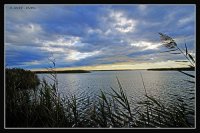-
You are here:
- Homepage »
- France »
- Languedoc-Roussillon » Vauvert

Vauvert Destination Guide
Explore Vauvert in France
Vauvert in the region of Languedoc-Roussillon with its 10,798 inhabitants is a place in France - some 368 mi or ( 592 km ) South of Paris , the country's capital city .
Time in Vauvert is now 08:45 AM (Tuesday) . The local timezone is named " Europe/Paris " with a UTC offset of 1 hours. Depending on your budget, these more prominent locations might be interesting for you: Villetelle, Valence, Saint-Gilles, Nîmes, and Montpellier. Since you are here already, consider visiting Villetelle . We saw some hobby film on the internet . Scroll down to see the most favourite one or select the video collection in the navigation. Where to go and what to see in Vauvert ? We have collected some references on our attractions page.
Videos
No One Like You (Scorpions guitar cover)
Another Scorpions '80s classic tune. Backing track from www.guitarbackingtrack.com (unfortunately not Klaus vocals). Thanks for watching. Enjoy ! ..
Escapade camarguaise octobre 2009
Balade, en Camargue, à vélos et tricycles couchés accompagnés de quelques vélos droits. Organisation : Le Barjonaute, louer, pédaler autrement. 06 03 53 65 64. www.lebarjonaute.fr. ..
Balade en vélo semi-couché
Il ya quelques jours nous avions rendez-vous à Vauvert chez Le BARJONAUTE pour tout comme l'année dernière, après une pèriode sans sport, donc sans vélo - tout juste repris il ya quelques jours- essay ..
Quelques images de tour en tour
Film réalisé pour Le BARJONAUTE à Vauvert. Circuit de "Tour en Tour" de Vauvert à Aigues-Mortes et retour. ..
Videos provided by Youtube are under the copyright of their owners.
Interesting facts about this location
Gallician
For the European language, see Galician language Gallician is a village in the commune of Vauvert in the département of Gard, in the region of Languedoc-Roussillon, southern France. It is located some 10 km from Vauvert, and has a population of about 1,000 people.
Located at 43.64 4.30 (Lat./Long.); Less than 6 km away
Psalmody Abbey
Psalmody Abbey, also Psalmodie Abbey or Psalmodi Abbey (French: Abbaye de Psalmody, Psalmodi or Psalmodie), was a Benedictine abbey located near Saint-Laurent-d'Aigouze in the Camargue, in the department of Gard and the region of Languedoc-Roussillon in the south of France.
Located at 43.64 4.20 (Lat./Long.); Less than 9 km away
Pont Ambroix
The Pont Ambroix or Pont d'Ambrussum (French for Ambrussum Bridge) was a 1st century BC Roman bridge in the south of France which was part of the Via Domitia. It crossed the Vidourle at Ambrussum, between today's Gallargues-le-Montueux in the Gard department and Villetelle in the Hérault department. In the High Middle Ages, a chapel devoted to St Mary was added to the structure. Today, only one of the original eleven arches remains in the middle of the river.
Located at 43.72 4.15 (Lat./Long.); Less than 10 km away
Oppidum de Nages
The Oppidum de Nages or Oppidum des Castels is on a hilltop overlooking the valley called the Vaunage, above the village of Nages-et-Solorgues, in Gard, between Nîmes et Sommières, in Languedoc-Rousillon, France. It is one of six iron-age oppida in the Vaunage, occupied between 800 BCE and 50 BCE.
Located at 43.80 4.23 (Lat./Long.); Less than 12 km away
Oppidum de Roque de Viou
The Oppidum de Roque de Viou is on a hilltop overlooking the valley called the Vaunage, above the village of Nages-et-Solorgues, in Gard, between Nîmes et Sommières, in Languedoc-Rousillon, France. It is in the commune of Saint-Dionizy and is one of six iron-age oppida in the Vaunage; about 200m from the Oppidum de Nages or Oppidum des Castels. It was occupied in three periods between 700 BCE and 600 BCE and between 350 BCE and 300 BCE and around 50 BCE.
Located at 43.80 4.23 (Lat./Long.); Less than 12 km away
Pictures
Historical Weather
Related Locations
Information of geographic nature is based on public data provided by geonames.org, CIA world facts book, Unesco, DBpedia and wikipedia. Weather is based on NOAA GFS.

